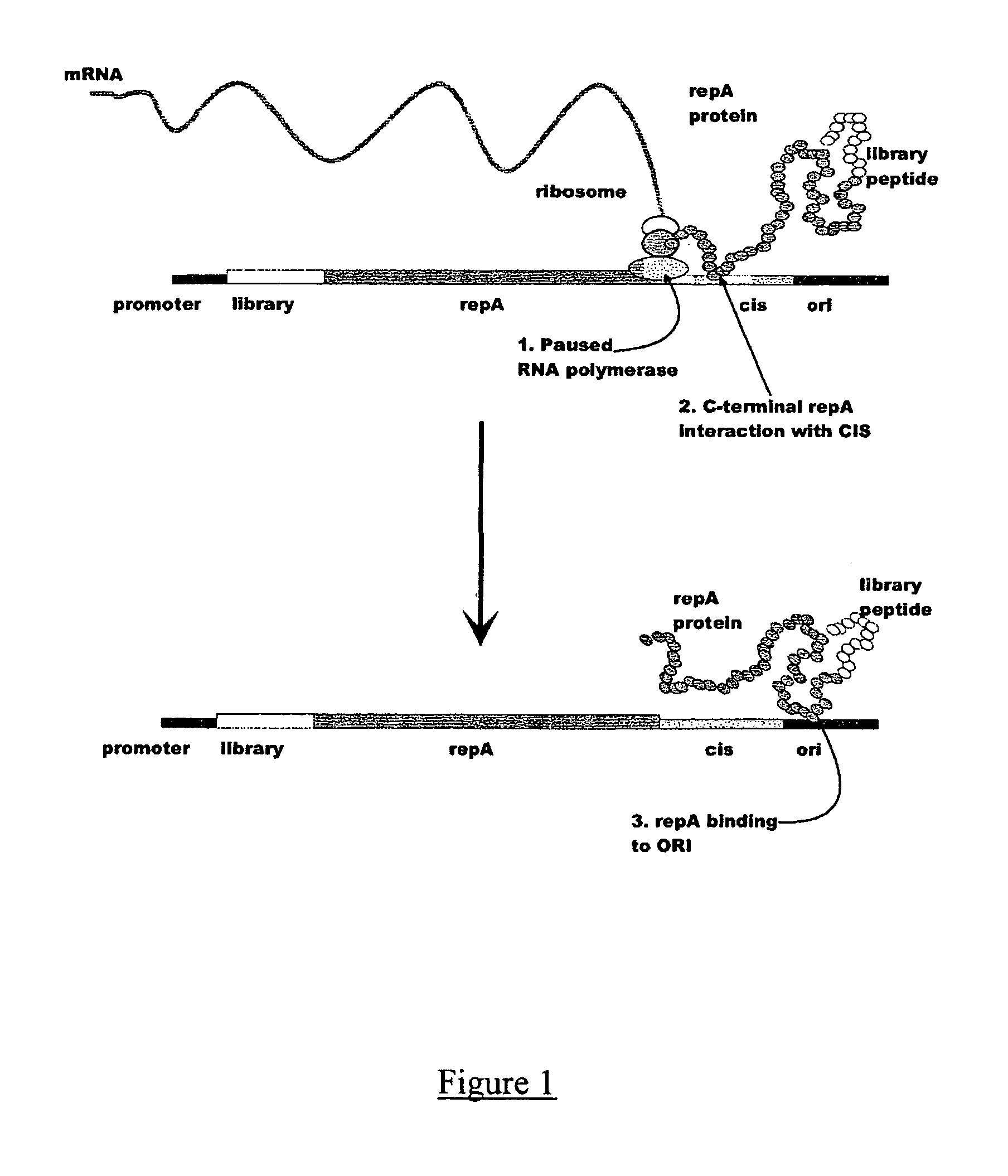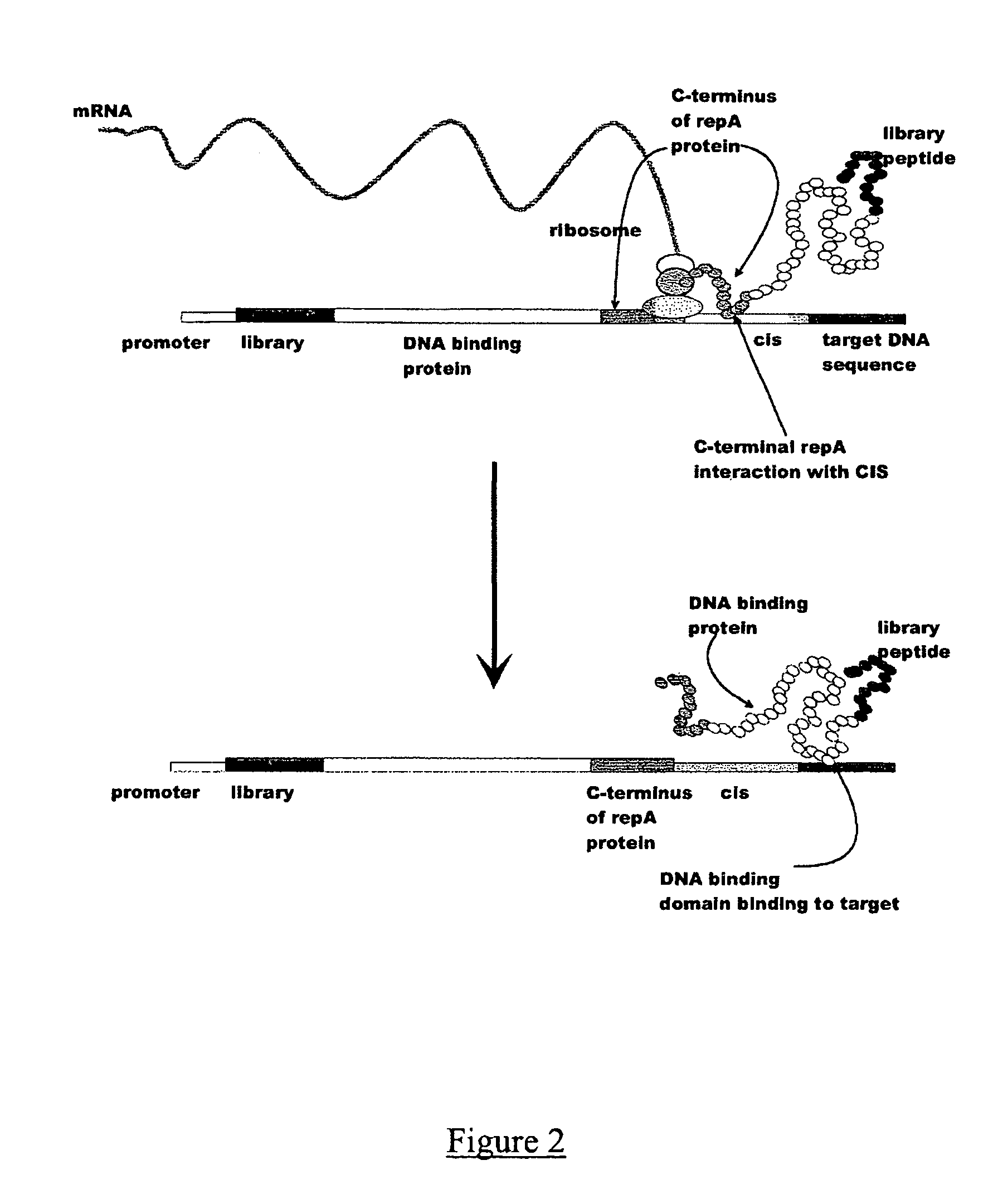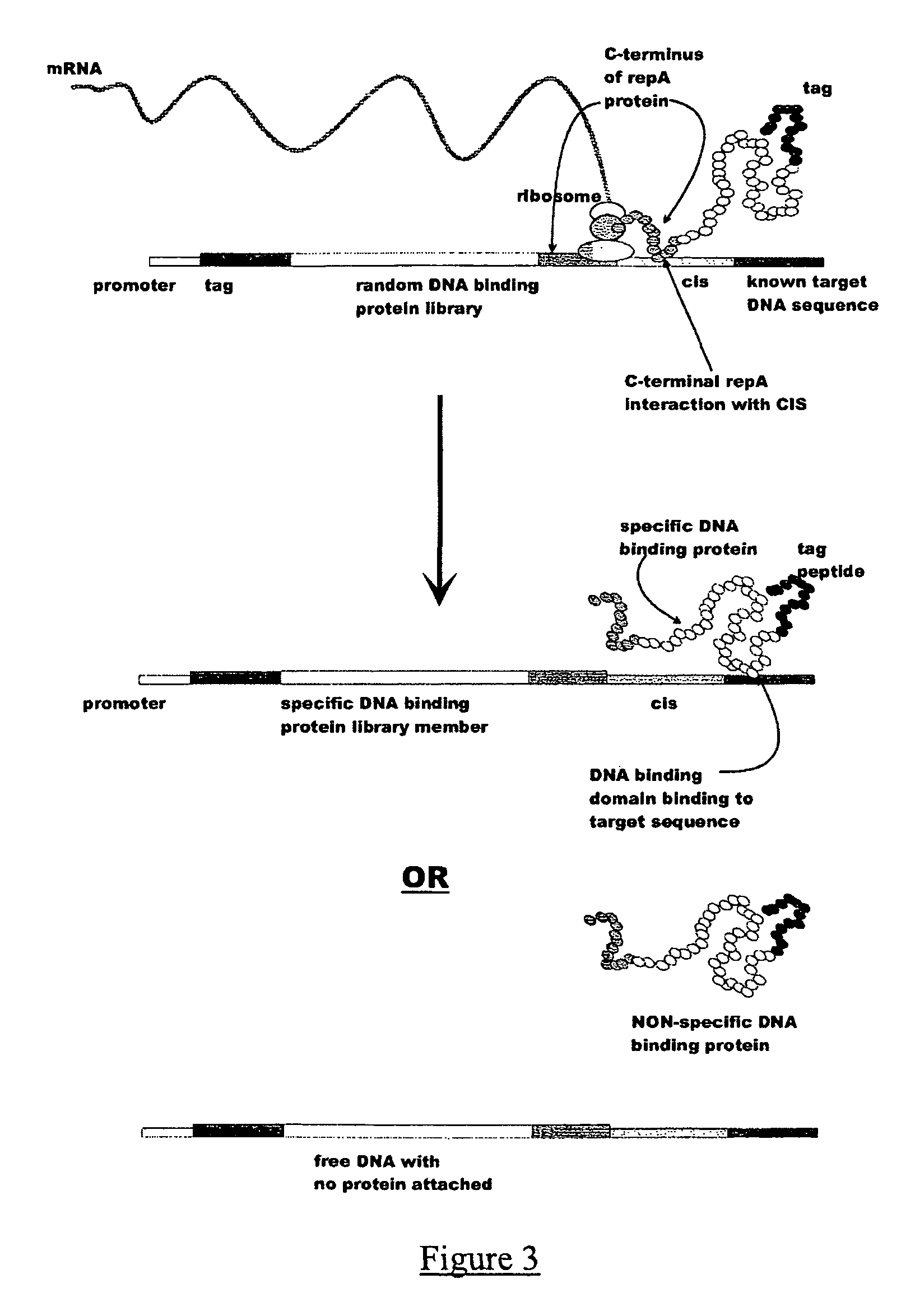In vitro peptide expression library
a peptide and expression library technology, applied in the field of recombinant dna technology, can solve the problems of difficult screening of dna libraries, difficult task of isolating an unknown gene which encodes a desired peptide from a recombinant dna library, and easy missed, and the screening of libraries larger than 10sup>6/sup>clones at best laborious and difficul
- Summary
- Abstract
- Description
- Claims
- Application Information
AI Technical Summary
Benefits of technology
Problems solved by technology
Method used
Image
Examples
example 1
Isolation of Specific cis Acting Protein-DNA Complexes
[0122]The in vitro expression constructs were prepared by sequentially adding the TAC promoter, the c-myc epitope, either the human kappa constant region or the V5 epitope to the RepA-CIS-ORI region, by PCR amplification. Such constructs can be prepared by many methods known to one skilled in the art, for example, by amplifiying different fragments of DNA followed by assembly PCR. In this example, the initial amplification template was the R1 plasmid which contains the RepA-CIS-ORI region (Masai, H. and Arai, K.(1988). DNAs Res. 16, 6493-6514).
[0123](a) Primary amplification. The RepA-CIS-ORI region was PCR amplified from a single colony of the strain ECO K12 harbouring plasmid R1 using 12.5 pmol of each of the primers REPAFOR (SEQ ID 01) and ORIREV (SEQ ID 02) in a 50 μl reaction containing 0.25 mM dNTPs, 2.5 units Taqplus Precision DNA polymerase, 1×PCR reaction buffer (Stratagene Inc, Amsterdam, Netherlands). The REPAFOR prime...
example 2
Separating the RepA-DNA Complex
[0147]The two in vitro expression constructs (SEQID12 and SEQID13) already described in example 1 were used in a selection experiment against anti-human C-kappa antibody as described in Example 1, except that DNA was recovered and released from RepA by using either of following methods; Glycine, Triethylamine, Phenol / Chloroform, Proteinase K, and EDTA. These methods are described below.
[0148]Glycine: tube was incubated with 500 μl of 200 mM Glycine, 150 mM NaCl (pH2.0) for 10 minutes. The glycine eluate was then transferred to a fresh eppendorf tube and 50 μl of 2M Tris (pH 8.5) added.
[0149]Triethylamine: the tube was incubated 500 μl of 0.1M Triethylamine for 10 minutes and the triethylamine eluate was then transferred to a fresh eppendorf tube and 250 μl of 1M Tris (pH 7.4) added.
[0150]Phenol / Chloroform: as example 1 above.
[0151]Proteinase K: the tube was incubated with 500 μl of 100 mM Tris (pH 8.0), 10 mM EDTA (pH 8.0), 0.5% SDS for 30 minutes at 3...
example 3
Detection of Specific Anti-V5 Binders in a V5-spiking Experiment Using CIS Display Technology
[0155]The in vitro expression constructs were prepared by adding the TAC promoter and either the V5 epitope or a 12-mer NNB library to the RepA-CIS-ORI region, by PCR amplification. Such constructs can be prepared by many methods known to one skilled in the art, for example, by amplifiying different fragments of DNA followed by assembly PCR. In this example, the initial amplification template was the R1 plasmid which contains the RepA-CIS-ORI region (Masai, H. and Arai, K.(1988). Nucleic Acids Res. 16, 6493-6514).
[0156](a). Primary amplification. The RepA-CIS-ORI region was PCR amplified from a single colony of the strain ECO K12 harbouring plasmid R1 using 12.5 pmol of each of the primers REPAFOR (SEQ ID 01) and ORIREV408 (SEQ ID 20) in a 50 μl reaction containing 0.25 mM dNTPs, 2.5 units TaqDeep Vent DNA polymerase mixture (20:1), and 1×PCR reaction buffer (New England Biolabs, Beverly, Ma...
PUM
| Property | Measurement | Unit |
|---|---|---|
| half life | aaaaa | aaaaa |
| pH | aaaaa | aaaaa |
| pH | aaaaa | aaaaa |
Abstract
Description
Claims
Application Information
 Login to View More
Login to View More - R&D
- Intellectual Property
- Life Sciences
- Materials
- Tech Scout
- Unparalleled Data Quality
- Higher Quality Content
- 60% Fewer Hallucinations
Browse by: Latest US Patents, China's latest patents, Technical Efficacy Thesaurus, Application Domain, Technology Topic, Popular Technical Reports.
© 2025 PatSnap. All rights reserved.Legal|Privacy policy|Modern Slavery Act Transparency Statement|Sitemap|About US| Contact US: help@patsnap.com



